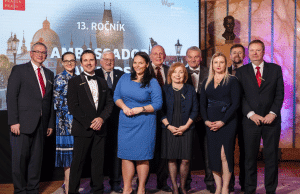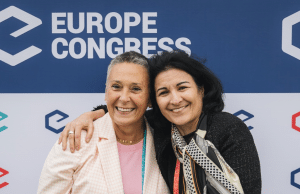The meetings industry is one of the fields of tourism with the aim of participation at domestic or international meetings of professionals from a different field, where the participants exchange knowledge and experiences. This form of tourism is very desirable among tourist workers since it has the following qualities: non-seasonality and high consumption of participants. Congress participants mostly don’t cover their own expenses or are at least partially sponsored by companies or organizations. Research also demonstrates congress participants spend at least three times more than regular tourists. Factors influencing relatively larger economic effects of the meetings industry are: height of personal income, distance of place of residence, duration of the meetings, frequency of meetings and size of escort.
Due to the economic importance and (global) trends demonstrating the rise of the meetings industry, knowing the factors, which influence the decision to take part in a conference, is key for the management of organizations and association, offering capacity and supplementary services for a successful execution of an (international) event. It is interesting to note this area is seldom researched in international literature. The identification of influence factors and the empiric assessment of parameters of the decision model, which explain the determinants of an individual’s decision for or against conference participation, measured at different times and locations, have a significant added value for the management in the meetings industry.
The core of the deciding issue is demonstrated in the picture below. In the forefront is the individual who each year decides to participate at a conference, held in a different country every year. The decision “yes” or “no” can be presented as a system of events, where event “no” is opposite to event “yes”. The central question is which are the key influential factors explaining the occurrence of event “yes”.
To this end we established an empirical assessment of the model which explains the individual’s decision to participate at an international congress.
The timeline of the carried out analysis is as follows: first we chose a conference – in our case it’s a conference which also took place at Cankarjev dom – and studied the available data on the conference collected by FEICA (Fédération Européenne des Industries de Colles et Adhésifs) and the PCO. This is the data on 493 participants in the period from 2004–2007. The data shows the participation of 493 participants at the chosen conference for an individual year. Some took part in the conference every year, others didn’t. In our case we tried to explain their decision to participate through an intersection of three key factors.
The fist factor is distance. The effect is demonstrated in the picture below.
As evident from the chart, there are no noticeable differences in the decision for or against participation based on the criterion of distance. Throughout the interval of distance the participation and non-participation are equally divided. The statistic analysis itself showed distance doesn’t have a statistically significant influence on participation or non-participation at the conference.
The second effect we studied is the influence of prices on the decision of an individual. The background of this influence reflects the expectation that an individual from a country with a relatively lower general price level, would choose not to participate at a conference in a country with a relatively higher general price level. The effect is demonstrated in the picture below.
As evident from the division of participation and non-participation based on the coefficient of relative inflation, it is evident that the dynamics of prices are positively connected to the decision for participation (which was further proven by empirical testing). This result can be interpreted as conference participation triggering pressure on the raising of prices. This is a known effect – if there is an event at a certain location, the local prices of goods raise, due to higher demand.
The third influence is connected to the income effect. In this case we expect, the height of the fee influences the individuals decision to participate at the conference, considering the individual’s disposable income.
The effect is demonstrated in the picture above and validates our expectations, which were also proven by the results of the empirical analysis. This means the relation of fee size and disposable income of the participant is the central influential variable with a clearly defined cause and effect relation.
Management in the meetings industry should therefore take into account distance is not an obstacle, relative prices don’t influence the individual’s decision to participate, yet the local suppliers respond to an increase of demand from conference participants. We cannot however neglect the fact this survey was carried out for a European conference (FEICA) and that results considering distance would probably be different for a global conference. Participation is decisively influenced by the size of the fee. This means the management of associations and organizers should take a systematic approach to defining the mass of potential conference participants and assess their economic power then set the fee policies based on this data.
The meetings industry is definitely one of the most profitable forms of tourism and has the most positive effect on the socio-cultural development. With a fast development of technology and science the number of conferences where such developments are studied, presented and discussed is growing. Demand in the meetings industry is growing faster than demand for international tourism, which creates new possibilities for a diverse tourist potential. Its characteristics such as high profit, job creation and influence on other sectors, a full tourist season, positive additions to the process of urbanisation, contribution to the reputation of the country and city – facts other tourism studies have mentioned before. Meetings provide advertising and development for congress cities, are a prestigious and at the same tame demonstrate the status of the country.
Mag. Dušica Todorovič













